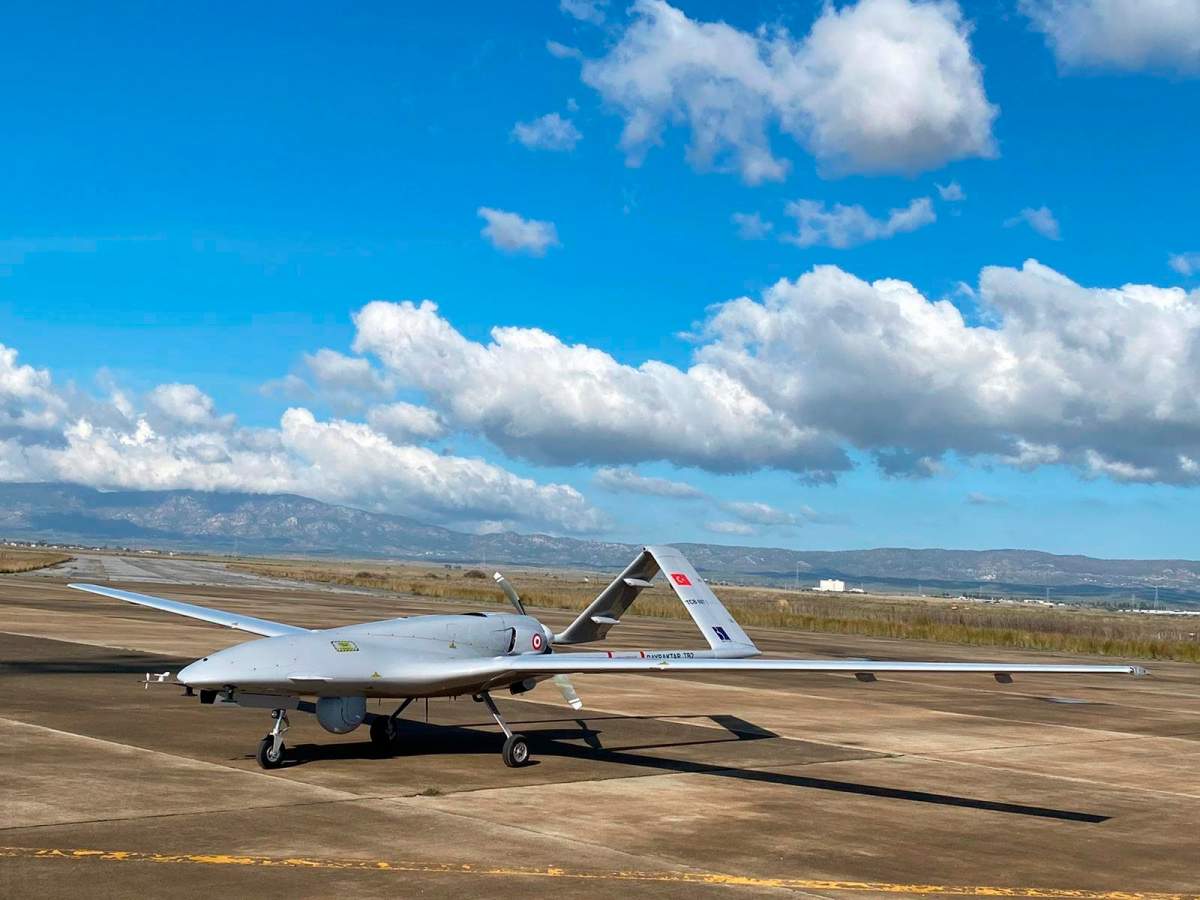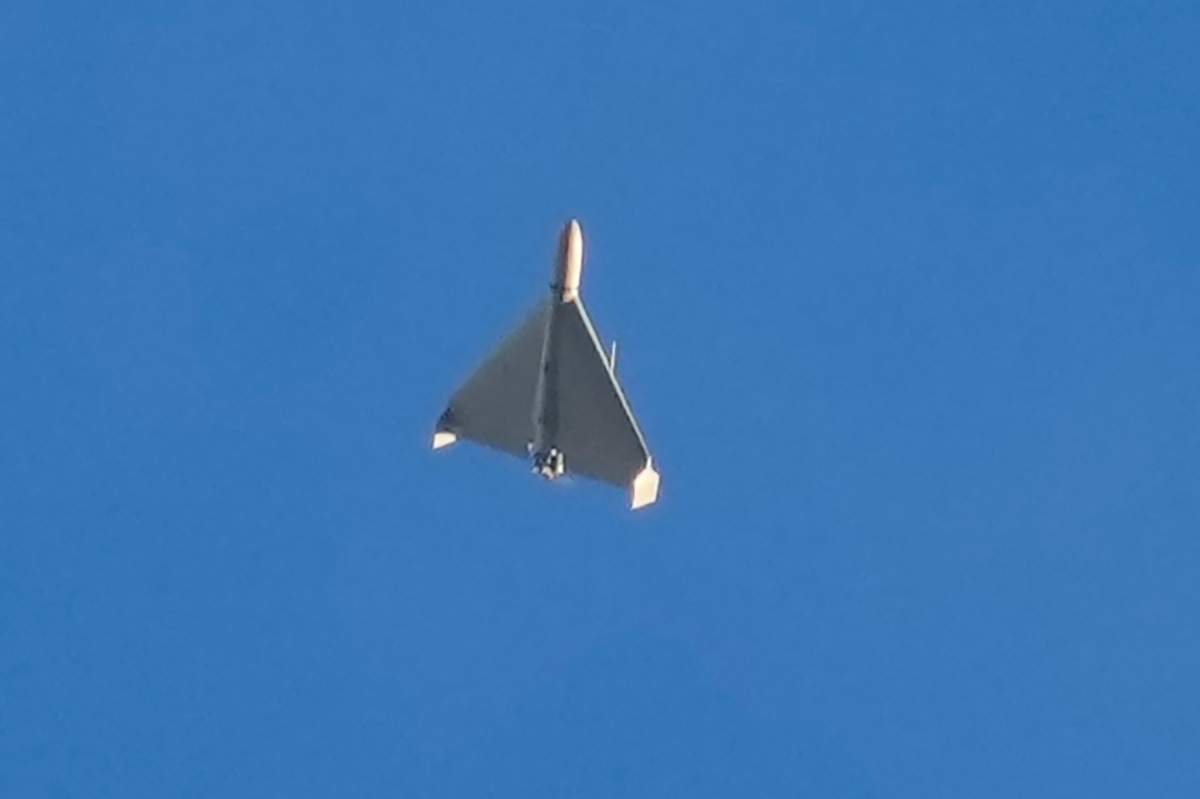The use of suicide drones in Ukraine could be a prelude to a new phase in the now eight-month-old conflict, an expert in drone warfare says.

Drones have been featured throughout the war in Europe, be it Ukraine’s use of the Bayraktar TB2 drone or Russia’s Iranian-made Shahed-136, the latter of which made headlines recently due to strikes in Kyiv.
These modern weapons “provide a critical capability” to exploit vulnerabilities in defences, and their use may be a prelude to a new phase in the conflict, said U.S. Army Lt.-Col. Paul Lushenko.
“What we’re observing in the ongoing war in Ukraine is a proliferation of drones of various shapes and sizes,” said Lushenko, who is also a PhD candidate at Cornell University.
“It’s hard to determine whether or not this is a prelude to a new phase of the conflict, but nevertheless continues to proliferate these (suicide) drones widely to have tactical … (and) operational implications.”
What are drones?
Drones are unmanned aerial vehicles that can be remote-controlled or preprogrammed for a variety of uses.
There are many types of drones, including more sophisticated unmanned ones that can launch missiles. The U.S.-made Predator is one of the more common known drones to be used in combat.
In battles, drones have been used to gather intelligence, direct artillery strikes, drop explosives or strike targets themselves. In particular, small killer drones are also quickly surpassing missiles as the remote weapon of choice because of their size, precision, and cheaper cost.
“They’re so asymmetric,” Lushenko told Global News.
“In other words, they provide a critical capability to exploit a vulnerability, which is the lack of air defences.”
How have drones been used in the Ukraine war?
Since the onset of the war on Feb. 24, drones have been featured. Most notably, Ukraine’s use of the Turkish-made Bayraktar TB2 drone has become popular in the country. Kyiv has utilized the drone to help destroy several Russian artillery systems and armoured vehicles.
Ukraine has received donations of those drones throughout the war, and Canada has chipped in as well, providing in March cameras to be fitted on the Bayraktar.
Aside from the Bayraktar, which is a medium-altitude, long-endurance drone that can be remote-controlled, there have been reports of commercial drones being retrofitted with explosives to destroy Russian targets. In July, a small explosive device carried by a makeshift drone blew up at the headquarters of Russia’s Black Sea Fleet on the Crimean Peninsula, wounding six people and prompting the cancellation of ceremonies there honouring Russia’s navy.
“This is really what some people have called sort of the game-changing dynamic of a proliferation of drones,” Lushenko said.

Get breaking National news
“Which is to say a delegation of drones down to people with little-to-no military training that could extend the operational reach of lethal fires that could enable broader intelligence, surveillance and reconnaissance.”

While Ukraine’s use of drones has been documented, earlier this week, Russia made headlines over its attacks in the country using Iranian-made Shahed-136 drones.
Enter the ‘suicide drone’
These drones are packed with explosives and can be preprogrammed with a target’s GPS coordinates. They can nosedive into targets and explode on impact like a missile, hence why they have become known as suicide drones or kamikaze drones.
Drones like the Shaheds are called loitering munitions because when used at short range, they can hover over an area and then hit a target on an operator’s command. The Shahed drone is 3.5 metres in length, 2.5 metres wide and weighs about 400 pounds, according to the Ukrainian online publication Defense Express, which cites Iranian data. It has a 50-horsepower engine with a top speed of 185 kilometres per hour.
Shaheds are relatively cheap, costing roughly US$20,000 each – a small fraction of the cost of a full-size missile. Ukrainian President Volodymyr Zeleknskyy said last week that Russia had ordered 2,400 from Iran.
Tehran has denied supplying the drones to Moscow, but by using them, Russia can avoid putting aircraft and pilots at risk and save its limited stock of expensive long-range precision missiles.
During an attack on Kyiv on Monday, Mayor Vitali Klitschko said 28 drones made up waves of successive attacks. Fired from a truck launcher in rapid succession, the drones can fly low and avoid radar detection.

However, their power to terrorize exceeds their explosive punch, according to Mykola Bielieskov, a research fellow at Ukraine’s National Institute for Strategic Studies.
The Shahed only carries a 40-kilogram explosive charge, compared to a conventional missile’s 480-kilogram warhead, he told The Associated Press on Tuesday. The issue is, they can be difficult to shoot down.
“They can fly in bunches. On the radar, it is one mark, and in that mark, there are actually five (drones),” Ukraine’s air force spokesperson Yuriy Ihnat told Reuters on Tuesday.
“Unfortunately, it is not possible to hit 100 per cent (of them) because the target is difficult and small in size.”
What do suicide drones mean for the Ukraine war?
Russia’s use of the Shahed drones shows there’s an “arms race” going on in Ukraine over this type of equipment, Lushenko said.
In addition to its drone arsenal, Ukraine has also been equipped by allies with similar drones like the U.S.-made Switchblade and Phoenix Ghost.
These drones can “broaden situational awareness, and even has some strategic implications in terms of propaganda value,” Lushenko said.
“You have Russia, who sees that its countermeasures, those designed to defeat these capabilities are rather ineffectual and also wants to capitalize on the proliferation of these capabilities and has little place to turn except for Iran.”
Russia is now directing Shaheds at civilian targets rather than battlefield ones because Ukrainian forces have “learned how to fight them effectively,” intercepting a little more than half of them, Bielieskov said.

In recent days, attacks on Ukrainian infrastructure have intensified, and NATO in response is equipping Ukraine with air defence systems to help the country defend itself.
Time will tell whether or not the defence systems will work against these drone attacks, but Ukraine’s recent gains on the battlefield show Russia feels “compelled” to acquire these weapons, Lushenko said.
“What you’re seeing here is a spiral dynamic, which international relations theorists and security scholars believe is a testament to broader escalation in a war,” he said.
“That brings us to the point where Russia feels comfortable, and potentially the necessity, to acquire these capabilities to bring parity to the balance of power on the battlefield, which has been shifted decidedly in favour of Ukraine.”
— with files from The Associated Press and Reuters












Comments